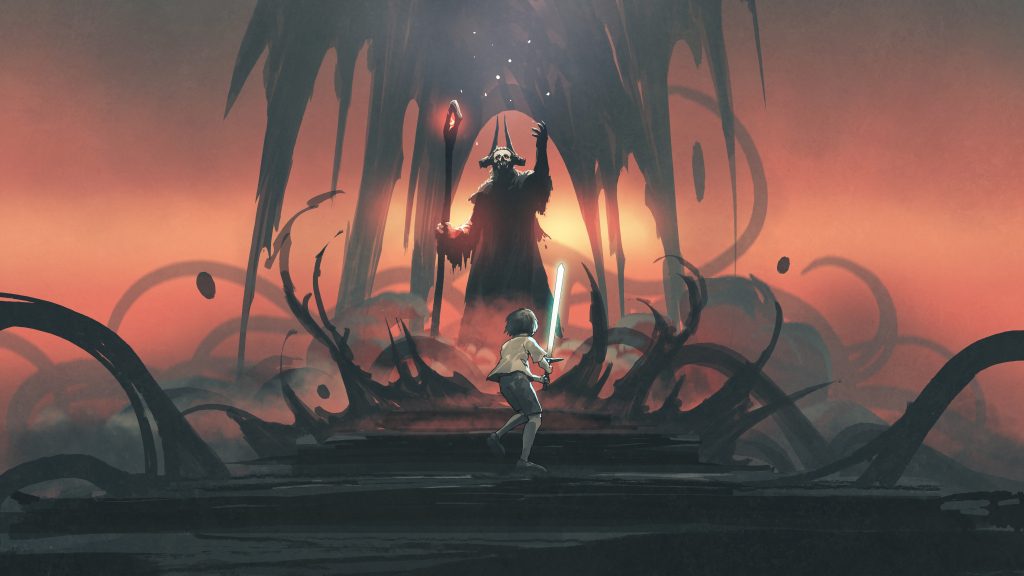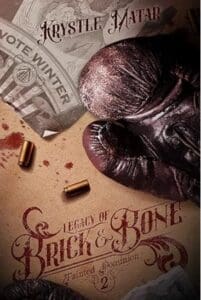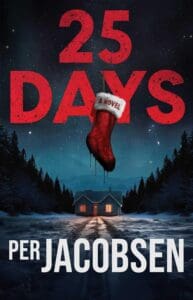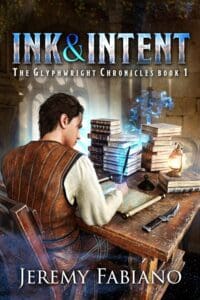
By Their Baggage Ye Shall Know Them: Trying To Make Engaging Characters
How can you know a person when they are just a jumble of words on paper?
What is a character? What makes them seem real? How do you make one?
You draw stick figures on the wall and then throw spaghetti at them until something sticks in the right shape to make art.
I am not here to tell you the one and only way to do a thing, because, in truth, no one can. We are each our own. Every author is different. And every character is different. No one knows the right way for another artist to make art. However, it is my hope to share some things that have worked for me, and that might work for you, too, or at least get you thinking in the direction you want to go.
There have been many people who have written about how to make a character seem fun and/or three-dimensional by giving them an in-depth backstory, dropping baggage into their past, or faking it with a handful of surface details, like a favorite hobby, a catchphrase, the way they dress, where they live, a physical trait, an odd quirk.
There have been many who have written about how to make a character likable, or unlikeable, or downright awful. Show people admiring them. Show people fearing them. Show them hurting an animal. Show them helping someone onto their feet. Show them killing someone nice. Make sure they have agency. Be certain to write them an inner conflict. Don’t forget to give them a pet parakeet.
There are many tips and tricks about how to toss together a grab bag of random characteristics to make a person. Pile a bunch of things on top of one another to make a character feel real. Stumble backwards into a character, adding some things, discarding others, using nothing more than trial and error.
Good or bad, whether people love them, or love to hate them, at the heart of it all is one thing that makes a character engaging. They have to feel real. They have to have flesh. They have to have personality. They have to live. They have to be three-dimensional? (Or four-dimensional? Is that possible? That would be one better.)
Unfortunately for us all, there is no mathematical formula that tells us precisely which traits to add to which habits, and then divide by which flaws, times the cosine of which traumatic backstory to make a protagonist.
They are all a little bit different. And the people who create them are all a little bit different.
So let’s look at something universal.
When making characters, I used to just throw things at each other. Bounce dozens of things around until some things meshed. The process could go on for hours or days…or infinity. It was time consuming. It was tedious. It was often futile.
Even when it worked, there was a lot of trying one trait out, or one flaw, or some catchphrase, or a pet peeve, swapping things out, hitting a wall, starting over. It seemed to take a long time, and I often didn’t find out what the right choices were for my characters until I had already written half a book, which resulted in a lot of going back to the drawing board.
But after a whole lot of character-creating, I found a way to approach it a little differently, and it has worked wonders for me. I found a shortcut to the center of my characters. Two core questions with answers that not only showed me who my characters were, but also shined like a beacon that tended to draw to me exactly the right surface traits and the right baggage to give them.
The Core:
Sure, your characters will likely need a family backstory, a legacy, a profession, an emotional angle, a wardrobe, friends, a catchphrase, a favorite food, a dream for the future. They will need possessions, fashion, and personality.
But there are two core things that are important to get to when crafting a character, whether a main character or a side character. It is important to find this core, and the sooner the better. Everything else about how they act or react, everything they do or say, revolves around these two things:
1 – What their central paradigm, theme, or belief is.
2 – How they feel about themselves.
These two concepts together will guide every action, determine every step they take. Their values and desires will stem from this center. There does not have to be a why to any of it yet. We can get to that later. If you have some of that in mind already, great, but if not, don’t worry. Figuring that out after the fact is part of the fun.
All that is important at the beginning is that they have these two things, a binary star for all their other characteristics to revolve around. Between them we have the base of the soup. Every other detail about them is an ingredient added in to spice it up. A binary star soup. (Okay, I admit I can get out of hand with metaphors very quickly.)
Let’s start with the first one—paradigm, theme, or belief.
A core paradigm for a character can be anything. Literally anything. It could be big or small, local or universal. It could be a religion, a sense of justice, a love of family, a feeling of victimhood, a need to feel smart, a need to excel, a need to belong, a need to travel, a need to sculpt statues, a pride in their position in society, a compliance with the traditions of one’s elders, a desire for revenge, caring for their family, protecting the poor, a sense of justice, a hatred, a sense of preservation, an obsession with winning, a need to overcome something, a devotion to another, a dedication to a clan or kingdom, or simply a love of cats. (It can be two, or even three different ones, depending on the level of complexity you prefer in your story)
The choice is yours. But what matters is, to this character, everything boils down to this core concept(s). It underlies everything. It is always there, just beneath the surface, like words on the tip of the tongue.
Now for the second one—how they feel about themselves.
How a character feels about themselves will guide the way to how they feel about everything else. It is like a color filter for their personality. It will reveal their attitude.
Do they love themselves? Do they feel confident in their abilities? Do they suffer a silent shame? Do they exist in a vast ocean of self-loathing? Does the thought of themselves make them weep, or dance in the streets, or laugh uproariously? Do they think they are strong? Do they think they are weak? Do they love themselves? Do they hate themselves? Are they afraid of themselves? (Again, these examples and many others would stand on their own, but pairing them can make for some interesting conflicts)
From this answer I can dig into what is important to them. Is it important to them to be the center of attention? Is it important for them to feel in control? Is it important to them to look or feel strong? To be beautiful? To be frightening? To be held in a particular group’s esteem? Or a particular person’s? The ideas build upon one another from there.
There we have it. That’s it. This would show where their successes would be. This would show where they would make mistakes, and what kind of mistakes those would be. It would reveal their tragedies and triumphs yet to come.
Once I knew what these two things were, I knew my characters. Once this happened, my characters began to write themselves. I no longer had to throw things at the wall at random. The characters began selecting for me the kind of history/habits that would likely work for them. They began recommending what their hobbies and favorite meal and preferred haircut should be. They decided what clothes they wanted to wear, and what their favorite weapons were. They spoke with their own voice. They reacted. They breathed on the page. They came alive.
At that point, I was no longer creating the characters; the characters were revealing themselves to me. I believed in the characters. They became the ghost writers of their own stories.
Once this happened for me, I marveled at how easy it became to write their scenes. I could throw any obstacle in their path, any action, any conversation, any sex scene, and I instantly knew what their reactions would be. It felt natural. Real.
The Personality Traits And The Baggage They Rode In On:
Once I had the core figured out, I found myself with two directions to fill in with details for my characters:
1 – Where they were now – projecting the details of their current habits, likes, dislikes, tics, fears, drives, and phobias,
2 – Where they came from – to find the baggage that began their traits and down the path to where they are now.
The good thing is that both of these play off each other, whether I started with a specific trauma in mind and extrapolated their personality and quirks from it, or I threw a bunch of traits together first and then reverse-engineered the source of them later. They were all connected.
First let’s look at baggage.
The past rules the present. Going backwards in time to the beginning is useful to understanding a character. We carry our baggage with us forever.
Much of what a character’s central paradigm is, can often be traced back to some inciting event or memory. One can’t have a sense of revenge without feeling wronged in some way, after all. We do things the way we do them because we have made mistakes, or because others have. We are the way we are because of what we have seen, because of what we have learned, because of what we have done to others, and what others have done to us.
It could be a failed relationship, a death of someone close, exposure to violence. It could be something as simple as a pet dying, or being bullied, or humiliated in front of friends. It could be a time they did something wrong they feel guilty about. It does not matter what specifically it is. The choice is up to you (or to them). Let your creativity guide you.
It only needs to be a failure of some kind. Our failures stick with us, both ours and those of the people we trust. It is the same with our characters. Maybe it wasn’t their fault, or maybe it was their fault, or maybe they just think it is. Anything will do.
But when do we get to their habits and tics and phobias?
Well, it turns out that baggage itself is habit-forming.
The nature of the failure/baggage I selected could then be projected on the possible traits and habits. It could be the reason for some new habits and mannerisms to bubble up in my mind. It could lead to a whole new set of traits for a character. These bits are all connected, and they all play off one another.
I found that the best traits and habits were those that don’t (at least at first) have anything intrinsically to do with the plot. I gave the character a hobby, a favorite drink, a favorite place, a thing that frustrated them, a thing they hated that had nothing to do with the story. I let them complain about the weather they didn’t like, or revel in the smell of food that only they appreciated. I gave them phobias, or an irrational response to something—joyful, sad, fearful—it didn’t matter. Their core chose the right things for them.
In the end, whether I decided ahead what my character’s arc would be, or discovered it as I typed, knowing my character’s core allowed their natural reactions to shine through in every scene, with every interaction. It was a magnet to draw out just the right traits and details to put flesh on those bones, and with a lot less trial and error.
Taking the time to make characters feel real is worth it. Readers will notice. You will notice. And it will save incredible amounts of time if you can find them before you start writing what happens to them.
Thank you for lending me your time. No one can tell you the one and only way to make your character feel real. That path belongs to each and every author alone. I hope I was able to shine a light on a thing or two that may help you find that right path to breathe the kind of life into your amazing characters that they deserve.

Author Bio
Thomas Howard Riley is the author of the forthcoming epic dark fantasy book, We Break Immortals. He currently resides in a secluded grotto in the wasteland metropolis, where he reads ancient books, plays ancient games, watches ancient movies, jams on ancient guitars, and writes furiously day and night. He sometimes appears on clear nights when the moon is gibbous, and he has often been seen in the presence of cats.
He always wanted to make up his own worlds, tell his own stories, invent his own people, honor the truths of life, and explore both the light and the darkness of human nature. With a few swords thrown in for good measure.
And some magick. Awesome magick.
He can be found digitally at THOMASHOWARDRILEY.COM
On Twitter he is @ornithopteryx, where he is sometimes funny, always clever, and never mean.

Amazon UK: https://amzn.to/2UYvhtT
Goodreads: https://bit.ly/3zU8qyq
Title: We Break Immortals
Series: The Advent Lumina Cycle (#1)
Author: Thomas Howard Riley
Release Date: December 7th, 2021
Genre: Epic Dark Fantasy (Rated-R Epic Fantasy)
Cover Artist: Omer Burak Onal / @omerburakonal / https://www.artstation.com/equin0
Map Artist: Thomas Rey / @thomrey / https://www.artstation.com/thomrey




Leave a Reply